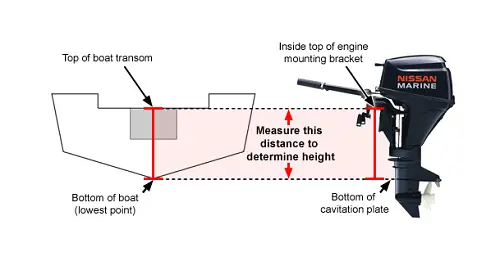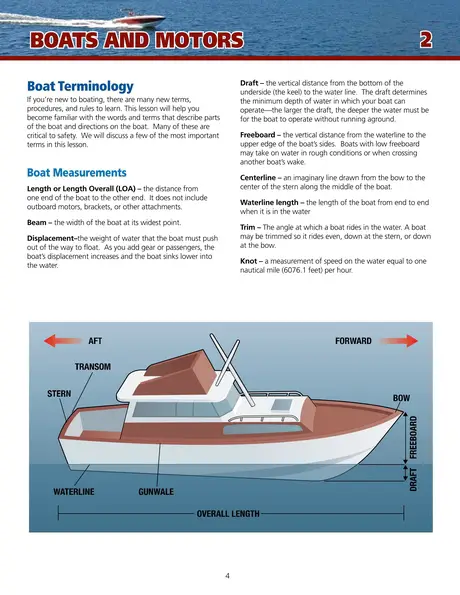A boat transom is the flat surface at the stern of a vessel. It’s also the structural member that supports the weight of the engine and transmits its thrust to the hull.
The main purpose of boat transom is to add strength and stiffness to the hull so that it can perform well at high speeds on the water.
The proper size and construction for a boat transom will improve the overall performance, handling, and steering of your boat. A properly built boat transom uses wooden stringers and plywood or fiberglass to increase strength without adding unnecessary weight.

Why Does the Boat Transom Matter to You?
There are many reasons why the transom matters to a boater. In addition to adding strength, stiffness and improving the performance of your boat, and saving energy, the transom construction can also have other advantages, from better fuel consumption, added control, and safety features.

Types of Boat Transom
Some common transom designs that are used in both fishing and recreation boats include:
Vertical transom
The vertical transom is a design that has the rear of the boat sticking out further in the water than a Plan transom. This type of construction makes it easier for propellers to function better and makes it easier to store gear on top of the hull.
Raked Transom
Another variation of the boat transom is a raked or reverse transom. This type of design features the rear deck extending out over the water instead of being flush with it, making it easier to use for activities like fishing and swim boarding. A raked transom can also help prevent damage from rocks or other underwater obstacles when you’re at the shoreline.
Flat transom
A flat transom is the most common type of boat transom. This design presents a level surface for boaters to stand on and helps reduce drag while traveling at higher speeds through the water. A flat transom also makes it easier to mount accessories like ski tows, live wells, fishing gear, and even swimming platforms.
Reverse transom
A reverse transom is a modification of the flat transom design that features a curve to the rear of the boat. This design not only reduces drag but also makes it easier to steer at a lower speed, since the motor has more access to water and less resistance when turning.
How Do I Get an Excellent Boat Transom?
When you choose a new boat or recreational vehicle for water sports, always check that transom first because this part affects a lot on the quality of your boating experience.
A high-quality boat transom should be strong enough to withstand abrasion from rocks, docks, and other submerged debris, but also be lightweight enough for easy maneuvering.
The most important function of the transom is to keep water from entering your boat and flooding it during rough seas.
When you need to choose the transom, first make sure that your vessel will have a flat bottom before shopping. You don’t want to buy the one with a rounded or sloping bottom because your boat will be unstable.
Things that can go wrong if you have a bad, cheap or outdated boat’s transom
A bad, cheap or outdated boat’s transom may cost you more in the end than you originally thought. The reasons are because it can have many negative effects on the overall performance of your vessel like increased fuel consumption, increased operating costs, and less speed. Cheap material for your boat’s transom – it may lead to premature fiberglass breakdown and result in major structural damage.
What is the Perfect Height of a Boat Transom?
The answer to this question will depend on your engine type. If you have a short shaft motor for example, then 15″ is the standard. For long shaft motors, it’s 20″ and for extra-long shaft motors, it’s 25″.
The height of the boat transom is one of the most important factors to consider. It dictates everything from what size outboard motor can be used, how high or low it sits in the water, and even how fast your boat will go. This might seem like a small detail but if you are not careful with this critical measurement then things could end up looking really bad for you.
What is the Best Wood For a Transom?
A good lumber yard should be able to help you find the right wood for a boat transom. We recommend ash, but it’s up to you.
A boat transom is the back wall of a boat’s hull. It is typically vertical, but can be raked (angled) forward or backward. The transom provides structural support for the stern of the hull and gives the hull its shape.
It also houses the boat’s engine, steering system, and sometimes the rudder.
A boat transom is the back end of a boat, typically vertical, and often contains a motor. It’s also where you might step aboard from a dock.
What is the Purpose of a Transom on a Boat?
A transom is the flat surface at the stern of a boat. It can be used to mount an outboard motor, as a place to step when boarding, or for other purposes.
How Long Do Transoms Last?
If you’re looking for a relatively short answer, transoms typically last around 10-15 years. But of course, this number can be greatly extended or shortened depending on a few key factors. Here, we’ll explore what those key factors are and how they affect the lifespan of your transom.
One of the most important things to consider is the material your transom is made out of. Wood is obviously the most common choice, but there are also options like aluminum and fiberglass. Each has its own advantages and disadvantages in terms of both durability and maintenance.
Wooden transoms are certainly the most traditional option, but they can also be quite delicate if not properly cared for. They’re susceptible to rot and decay if left exposed to the elements, so it’s important to make sure they’re well-sealed against moisture intrusion. With proper care, however, wooden transoms can last for many years without issue.
Aluminum transoms are becoming increasingly popular because they offer much better durability than wood without sacrificing too much in terms of weight or cost. They’re also very easy to maintain; simply cleaning them with soap and water on a regular basis is usually enough to keep them looking like new. However, aluminum does have one downside: it’s not as visually pleasing as wood or fiberglass (although this is admittedly subjective).
Finally, there are fiberglass transoms which offer the best combination of beauty and brawn thanks to their extremely tough construction. Fiberglass won’t rot or corrode like other materials can, so it’s an excellent choice for high-moisture areas such as bathrooms or boats . On top of that , it’s also very easy to clean – just like aluminum – making it low-maintenance option overall .
The only real downside to fiberglass is that it tends to be on the pricier side compared to wood or aluminum . So , how long do transoms actually last ? It really depends on which material you choose as well as how well you take care of it .
With proper care , any type of transom should be able to give you at least 10 – 15 years of service ; however , some may last considerably longer while others may not even make it half that time .
Can a Boat Transom Be Repaired?
If your boat’s transom is in need of repair, you may be wondering if it can be fixed. The good news is that, in most cases, a damaged transom can be repaired. However, the extent of the damage will dictate how extensive the repairs will need to be.
One of the most common problems with boat transoms is rot. This can be caused by water seeping into the wood or by prolonged exposure to sunlight and salt water. If caught early enough, rot can often be repaired with epoxy resin.
This is a strong adhesive that will bond the rotted wood together and provide support while the area dries out and heals. More severe cases of rot may require more extensive repairs. In some instances, it may be necessary to replace sections of rotted wood.
This is a more complex repair that should only be attempted by someone with experience working with boats and wooden hulls. Another common issue with boat transoms is cracked or split wood. This type of damage is usually caused by impact, such as hitting a dock or another vessel.
Small cracks can often be repaired with epoxy resin or marine-grade putty. Larger cracks may require replacement boards or panels. If your boat’s transom has been damaged, it’s important to have it assessed by a qualified marine technician before attempting any repairs yourself.
What is the Transom on a Small Boat?
The transom is the flat surface at the back of a small boat. It’s usually vertical, and it provides structural support for the outboard motor. The term “transom” can also refer to a bulkhead or partition that divides the stern (back) of a cabin from the rest of the boat.
